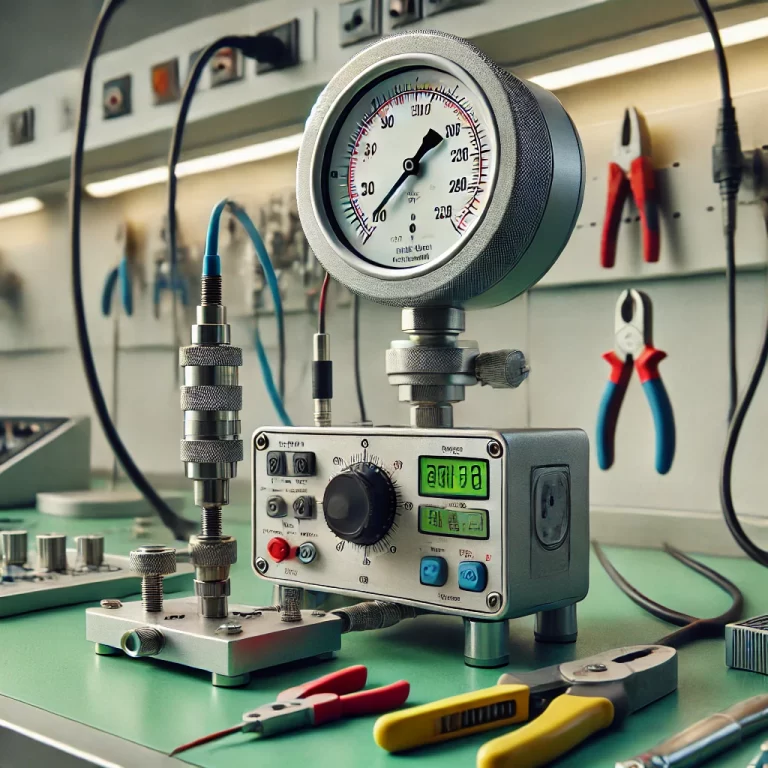When measuring hydrogen gas with a pressure transmitter, it is common to coat the stainless-steel diaphragm with a thin layer of gold. This may seem unnecessary at first glance, but the reason lies in the unique properties of hydrogen and its interaction with stainless steel. Below, we explore the scientific and practical reasons for this requirement and its significance in various applications.

1. The Unique Challenges of Hydrogen
Hydrogen, the smallest and lightest molecule, poses unique challenges due to its extraordinary ability to permeate through materials, including metals like stainless steel. The following two phenomena are of particular concern when measuring hydrogen pressure:
Hydrogen Permeation:
Due to its small molecular size, hydrogen can penetrate the crystal lattice of stainless steel. This occurs when hydrogen molecules dissociate into individual hydrogen atoms or ions, which can diffuse into and through the diaphragm material.Hydrogen Embrittlement:
Over time, the absorbed hydrogen can alter the metal’s microstructure, leading to a phenomenon known as hydrogen embrittlement. This process reduces the mechanical strength and ductility of the diaphragm, making it prone to cracking or failure under pressure.

2. Impact on Measurement Accuracy
Hydrogen permeation does not only compromise the diaphragm’s structural integrity but also affects the accuracy of pressure measurement. Key issues include:
Elasticity Changes:
Hydrogen absorbed in the diaphragm material alters its elastic properties. This can lead to drift in the pressure transmitter’s readings, reducing reliability and precision.Outgassing Effects:
Hydrogen trapped within the material may later diffuse out under certain conditions, causing fluctuating readings.

3. The Role of Gold Coating
Gold is an excellent barrier material for preventing hydrogen permeation due to its unique properties:
Chemical Inertness:
Gold is highly resistant to corrosion and does not chemically react with hydrogen, ensuring a stable interface between the diaphragm and the measured gas.Dense Atomic Structure:
Gold’s atomic lattice is highly compact, making it nearly impervious to hydrogen diffusion. By adding a gold coating to the stainless-steel diaphragm, the hydrogen’s ability to penetrate the material is dramatically reduced.Thin and Effective:
A thin gold layer, typically just a few microns thick, is sufficient to provide the required protection without significantly affecting the diaphragm’s flexibility or response to pressure changes.

4. Practical Benefits
The use of gold-coated diaphragms in pressure transmitters offers several advantages:
Enhanced Measurement Accuracy:
By preventing hydrogen from permeating into the diaphragm, gold coating ensures stable and precise pressure readings over time.Increased Durability:
The gold barrier protects the stainless steel from hydrogen embrittlement, significantly extending the operational life of the pressure transmitter in hydrogen-rich environments.Operational Safety:
In industrial applications where safety is paramount, the reliability provided by gold-coated diaphragms reduces the risk of failure and associated hazards.

5. Applications Requiring Gold-Coated Diaphragms
Gold-coated pressure transmitters are particularly valuable in industries where hydrogen plays a key role, including:
Hydrogen Energy Systems:
Hydrogen fuel production, storage, and transportation systems require highly accurate and durable measurement solutions.Chemical Processing:
Many chemical reactions involve hydrogen gas under high pressure, necessitating reliable monitoring equipment.Fuel Cells:
In hydrogen fuel cell technologies, precise pressure measurement is critical for optimizing performance and ensuring safety.Aerospace and Research:
Hydrogen is widely used as a propellant and in advanced research facilities, where stringent monitoring is essential.

6. Conclusion
The use of gold-coated diaphragms in pressure transmitters underscores the importance of understanding material science when designing equipment for challenging applications. By mitigating hydrogen permeation and embrittlement, gold coatings enhance the performance, accuracy, and longevity of pressure transmitters. As hydrogen continues to gain prominence in energy, chemical, and industrial sectors, such advancements will remain crucial in ensuring the safe and efficient handling of this versatile gas.
